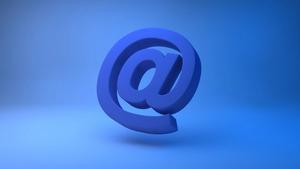Have you ever tried to craft an email marketing journey? It's not an easy task.
If you're struggling, you're not alone. With so many stages, touchpoints, and metrics to consider, it can feel overwhelming to create a cohesive email strategy that guides customers from awareness to advocacy.
But fear not! In this brief guide, we'll break down the key elements of an email marketing customer journey and provide actionable tips to help you craft engaging, personalized emails that drive results. By the end, you'll have a clear roadmap for leveraging email to build brand awareness, nurture leads, drive conversions, and turn customers into loyal advocates.
What is an email marketing customer journey?
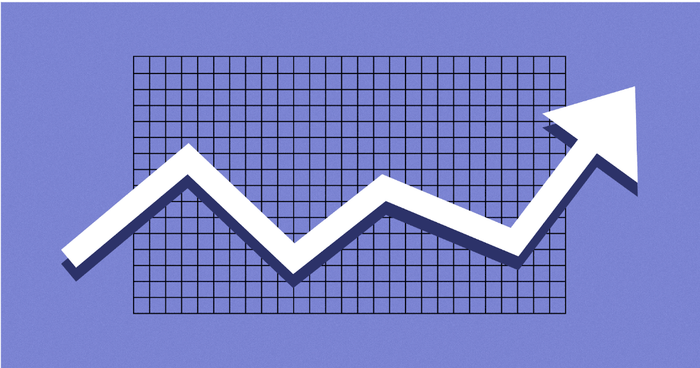
The email marketing customer journey maps your customer's experience from first contact to loyal supporter. It outlines the key touchpoints where your emails make an impact. This strategy helps you craft messages that fit each part of the buying process.
Why is this journey important? It lets you plan your emails with purpose. You see exactly where each message fits and how it helps your customer move to the next step.
Sending the right message at the right moment is a key part of email marketing. Understanding and implementing this route will help your email campaigns perform effectively. They will create lasting relationships that benefit your business.
A well-put-together email journey will let you:
- Send the right emails at the right timeKnowing where each customer is in their journey allows you to craft emails with content that is appropriate for their stage and needs. This guarantees that you deliver value and bring them closer to converting at each touchpoint.
- Improve the customer experienceMapping the journey helps you spot any roadblocks or friction points that deter customers. Remove these obstacles. Create a smooth, personalized experience. This boosts customer engagement and brand loyalty.
- Boost email marketing ROITargeted, relevant, perfectly-timed emails are much more effective at driving actions. This means higher open rates, click-through rates, conversions and a better return on your email marketing investment.
Consider the journey as a roadmap. You start by making them aware of your brand. Catch their interest. Next, help them evaluate your products with clear, useful information. Once they buy, don't just leave them there. Welcome them warmly, help them get started, and keep the lines open. Satisfied and loyal customers might return and even recommend you.
Outlined here are the six steps of the email marketing customer journey in further depth.
6 stages of email marketing customer journey
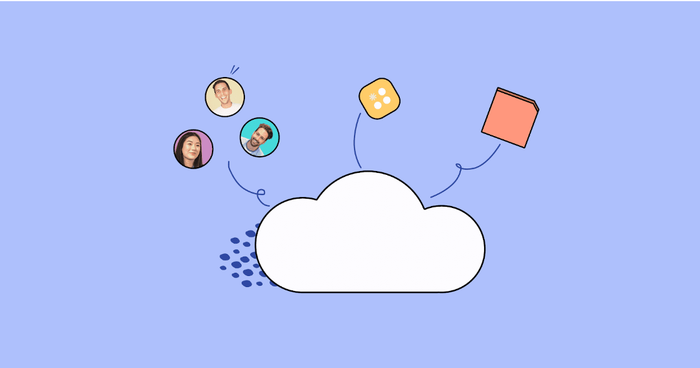
Did you know that email marketing has an average ROI of $36 for every $1 spent? That's an astounding 3600% return! But to achieve those kinds of results, you need to map out an effective email marketing customers' journey.
That said, let's take a look at the six stages of the email journey.
Awareness
Awareness is the first step in the email marketing journey. In this stage, you introduce prospects to your brand and products. The goal is to make a memorable first impression that sparks interest and curiosity. Using emails, you can effectively spread the word about what you offer and start to build relationships with your audience. This is about getting your brand noticed and setting the stage for further engagement.
You can generate awareness by:
- Newsletters: Send regular newsletters with a mix of educational content, company updates, and product highlights. Newsletters keep your brand top-of-mind and showcase your expertise.
- Educational content: Share insightful articles or tips related to your products. Show your expertise.
- Event invitations: Invite subscribers to online or physical events you host or participate in. This puts a face to your brand and facilitates direct engagement.
These strategies convert aware clients into those considering a purchase.
Consideration
Consideration occurs when potential customers weigh their options and decide if your product meets their needs. Your emails here must give them the facts they need to make this choice. You must also tackle any doubts they might have head-on.
This stage is super important. It's where you provide value and build trust. You do this by sharing detailed product information and customer testimonials. Show them why your product stands out.
In the consideration stage, you can use:
- Detailed guides and how-tos: Send emails that explain how your product works and how it can solve specific problems.
- Customer success stories: Share stories of how other customers benefited from your product. This builds credibility.
- Comparison charts: Provide comparisons that highlight the features of your products versus competitors. This helps customers see your advantages clearly.
These actions make it easy for potential customers to choose you. They see your product’s value and feel more confident in their decision.
Purchase
This is the stage where customers decide to buy. Your emails now need to make this process easy and appealing. This is the time to provide a little extra push to get them to complete their purchase.
You can achieve this with targeted emails that address final concerns and offer incentives. Here’s how:
- Abandoned cart emails: Remind customers about items they left in their cart. Offer a discount or free shipping to encourage them to finish buying.
- Checkout ease: Send transactional emails that simplify the checkout process. Include a direct link to the checkout page with a clear call to action.
- Final FAQs: Answer frequently asked questions about payment options, returns, or product guarantees to reduce last-minute hesitations.
Make sure your emails are clear and direct. Use strong, simple language to guide them through the checkout process. This can turn interest into sales.
Next up is the onboarding stage.
Onboarding

Following a purchase, new clients are introduced to your product through onboarding. It makes certain that people understand and appreciate their purchase. This stage instills confidence in your product which leads to efficient product usage.
You can onboard effectively through:
- Welcome and thank you emails: Start by thanking the customer. Confirm their choice was smart.
- Product tutorials: Send clear guides or video demonstrations. Show how to set up and use the product.
- Tips and tricks: Share advice for maximizing product benefits. Highlight lesser-known features.
This approach helps customers feel supported and knowledgeable. It reduces frustration and prevents buyer’s remorse. Good onboarding emails make the transition to using your product seamless. They pave the way for a positive ongoing relationship.
Retention
Retention in email marketing is about encouraging customers to continue interacting with your brand and making repeat purchases. In this stage, you maintain a stable customer base and increase each customer's lifetime value. The key is to keep the customers engaged and interested in what you offer beyond the initial sale.
Effective retention involves understanding customer needs, pain points, and preferences before delivering targeted content that resonates with them. Here are some strategies to improve retention:
- Winback campaigns: Target subscribers who have become inactive or disengaged. Offer an incentive or compelling reason to re-engage
- Feedback requests: Ask for their opinions on products or services. This shows you value their input and are committed to improvement.
- Anniversary or milestone emails: Celebrate the anniversary of their first purchase or other significant milestones. Offer a special promotion as a thank you.
When customers feel recognized and valued, they’re more likely to remain loyal and continue supporting your brand. Effective retention stabilizes your revenue and turns satisfied customers into advocates for your brand.
Advocacy
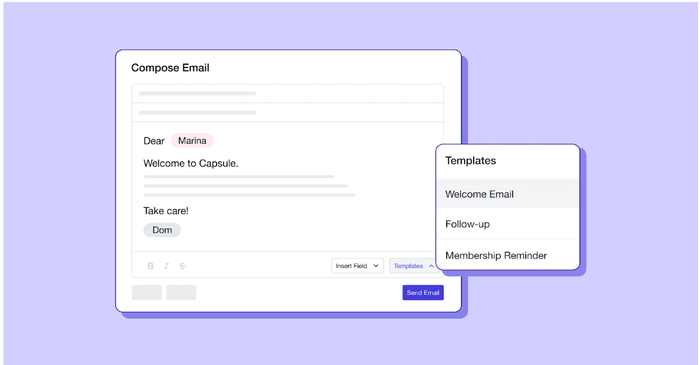
Advocacy comes about when satisfied customers actively advocate for your brand. They share their favorable experiences with others, which helps your reputation. This stage has significance for organic growth and can greatly increase your brand's visibility.
Here’s how to encourage advocacy:
- Ask for reviews: Send a follow-up email asking customers to review the products they purchased. Make it easy with direct links.
- Gather feedback: Request input on their buying experience. Show that you value their opinions.
- Encourage referrals: Offer incentives for customers who refer friends. This could be discounts or special rewards.
Customers don’t just come back; they bring new ones with them. Engaging with customers in this way extends your reach as well as deepens trust and builds brand loyalty. A customer who speaks highly of your brand is more valuable than any advertisement.
Email customer journey mapping
The road to purchase doesn't have to be long and complicated. Follow these steps to create your ideal customer journey map:
#1 Define goals
Setting goals is essential for developing your email marketing approach. Use SMART goals (specific, measurable, achievable, relevant, and time-bound) to track progress and verify that your efforts align with your business goals.
Here are example SMART goals for your email strategy:
- Increase subscriber count by 20% within six months. This is specific, with a clear metric and timeline.
- Achieve an open rate of 25% for the welcome email series by the end of the year. This sets a measurable target to work toward.
- Boost customer retention rates by 15% in one year through monthly engagement emails. This goal is relevant and time-bound, focusing on long-term engagement and customer satisfaction.
Setting such goals keeps your strategy focused and effective.
#2 Identify key touchpoints

Key touchpoints tell you where and how customers interact with your brand. Look at every stage of their journey.
Consider these touchpoints:
- Subscription sign-up: This is when a visitor decides to receive emails from you.
- First purchase: Note when and how a customer makes their initial purchase.
- Customer service interactions: Track emails that go back and forth after a service query or complaint.
- Event registrations: When users sign up for webinars or events via email.
- Downloadable content: When visitors provide their email in exchange for eBooks, whitepapers, or other resources.
Also, pay attention to these:
- Abandoned cart moments: When customers leave items in their cart without purchasing.
- Product reviews: When customers provide feedback on a purchase.
- Renewals or repeat purchases: When existing customers come back to buy again.
Each touchpoint offers a chance to engage and convert. Use this information to tailor your emails. Make sure they are relevant and timely. This will improve your relationship with customers at each stage of their journey.
#3 Segment your list
Don't just spray and pray. Instead, segment your list to ensure that each email is delivered to the correct person every time. Segmented emails get 30% more opens and 50% more clickthroughs.
You will need a lot of data to do it. CRO tools that log interactions are super useful for gathering customer data.
Then, you will need to think of segments. Some examples include:
Demographics
- Age: Divide subscribers into age groups like 18-25, 26-35, 36-50, 51+.
- Gender: Create separate segments for male, female, and non-binary subscribers.
- Location: Segment by country, state/region, or city to send locally relevant content.
Behavior
- Purchase history: Create segments based on products purchased, average order value, and frequency of purchases.
- Engagement: Divide subscribers into active, moderate, and inactive based on open and click rates.
- Lead source: Segment by how subscribers joined your list, like website signup, social media, or referral.
Psychographic
- Interests: Create segments around specific interests like fashion, travel, or technology.
- Lifestyle: Divide subscribers by lifestyle factors like marital status, parental status, hobbies, etc.
- Values: Segment by subscribers' values and beliefs, like sustainability, health, or social causes.
Firmographic
- Company size: Divide by number of employees, like small, medium, or enterprise.
- Industry: Create segments for different industries like healthcare, finance, and retail.
- Job title: Divide by seniority level, like C-suite, manager, individual contributor
Craft and personalize content
Now, it's time to craft the emails themselves. You need to use a mix of promotional and informative content. Why? Promotions from all angles don't appeal to people. To find the right mix, you will need to do a lot of testing, which we will get to later.
Personalization is another aspect you need to look into. 60% of the most successful marketers think it is the top priority in automated email campaigns. Email marketing tools like Transpond let you personalize your emails.
To personalize, you will be using data gathered earlier. You can do this through these activities:
- Personalize the email copy, images, and offers based on subscriber data.
- Recommend products or content that aligns with the subscriber's interests and past behavior.
- Use dynamic content to show different sections to different segments.
- Share stories and content that connect with the reader's interests or stage in the funnel.
- Adapt your tone and language based on the segment you're addressing.
- Use the subscriber's name or other personal details in the subject line.
- Craft subject lines that pique curiosity, offer value or address the recipient's interests. Personalized subject lines have a 26% higher open rate on average.
- Use subscriber data to personalize the images and visuals in your emails.
- Showcase products, offers, or content that match the recipient's preferences.
- Send emails from a person, not just a generic business name.
- Send emails at times when recipients are most likely to engage, based on their time zone or past behavior.
The key is to leverage subscriber data to deliver relevant, valuable content that resonates. Email marketing software like Transpond makes it a breeze.
Automate sequences
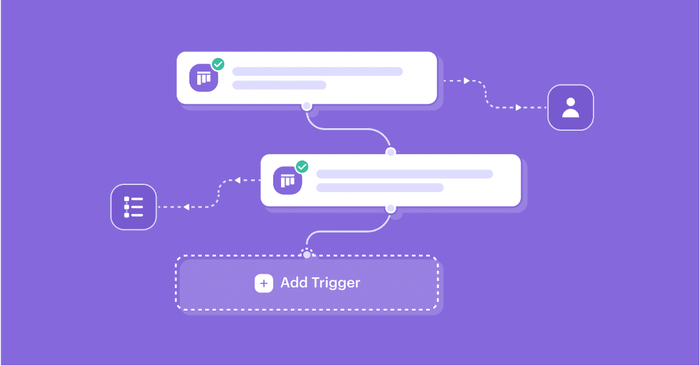
Automating your email sequences saves you time while delivering a personalized experience at scale.
Why automate? 91% of marketers say marketing automation helps them achieve their objectives. Automated emails feel personal because they are triggered by the recipient's behavior. This makes them more relevant and engaging.
What can you automate?
- Welcome series. Onboard new subscribers with a series of emails that introduce your brand, products, and value.
- Abandoned cart emails. Remind subscribers about items left in their cart with a special offer to complete the purchase.
- Birthday emails. Wish subscribers a happy birthday and include a special gift or discount.
- Win-back emails. Set up a series of win-back emails to re-engage inactive subscribers. Trigger the series after a certain period of inactivity, like 30 or 60 days. Offer incentives like discounts or exclusive content to lure them back.
- Post-purchase emails. Automate a series of emails to follow up after a subscriber makes a purchase. Send a purchase confirmation, shipping notification, and delivery confirmation. Include product education, cross-sells, and upsells to encourage repeat purchases. Ask for a product review a few weeks after delivery to generate social proof.
Essentially, there’s an endless supply of emails to automate. Whatever comes to your mind, you can probably do it now.
Transpond makes it easy to set up these automated sequences. Simply create the emails, set the triggers, and let the software do the rest. Automated emails are sent at the optimal time for each recipient based on their time zone and past engagement.
Automate your email sequences to save time, boost engagement, and deliver a personalized experience. Automated emails feel personal while driving results at scale.
Send emails and reap benefits!
That isn’t where the trip ends. To find an equilibrium, you will have to measure many things. A/B testing is a great way to maximize your potential return on investment. It involves changing one variable within the email and looking at the results.
You can test:
- Preheader text
- Subject line
- Email length
- Sender name
- Emojis
- Animated GIFs
- Send times
- Urgency and scarcity
- Social proof
The key is to test one element at a time so you can clearly attribute any performance changes to the variable you changed. Over time, you'll build up a data-driven understanding of what resonates best with your unique audience.
Email customer journey: top metrics to track
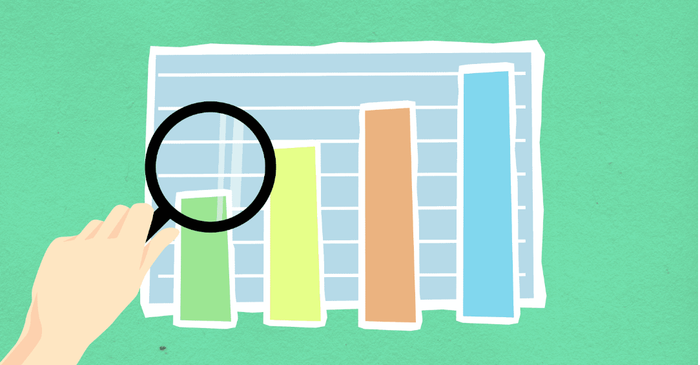
You don't want to stay in the dark when it comes to your email journey. It is an indispensable part of any email strategy.
It's imperative that you track particular email metrics to help you monitor the success of your email marketing. Here are a handful of the more significant ones, divided into categories.
Engagement metrics
- Open rates: Indicates the appeal of your subject lines and sender name.
- Click-through rates: Measures the effectiveness of your content, links, and calls-to-action.
- Bounce rates: Monitors invalid email addresses or technical issues.
- Email shares: Checks how many emails were shared by the recipient.
Conversion metrics
- Conversion rate: Tracks the percentage of recipients who completed a desired action.
- Revenue: Measures the revenue generated from email campaigns.
- Return on investment (ROI): Calculates the profit generated for every dollar spent on email marketing.
- Email journey length: Tracks how long it takes new subscribers to make their first purchase.
Loyalty metrics
- Unsubscribe rate: Monitors the percentage of recipients who opt out of your emails.
- Repeat purchase rate: Tracks customers who make multiple purchases.
- Net Promoter Score (NPS): Measures customer loyalty and likelihood of recommending your brand.
- Customer Satisfaction (CSAT) score: Gauges overall customer satisfaction.
Segmentation metrics
- List growth rate: Tracks the growth of your email list over time.
- Subscriber engagement by segment: Compares engagement metrics across different customer segments.
- Average order value by segment: Analyzes the average revenue generated per order for each customer segment.
Automation metrics
- Workflow completion rate: Measures the percentage of recipients who complete an entire email journey.
- Abandoned cart recovery rate: Measures the percentage of abandoned carts that are successfully recovered through automated emails.
- Onboarding completion rate: Tracks how many new subscribers complete the onboarding email sequence.
Tracking these important indicators will allow you to assess the performance of your client experience and discover areas for improvement. Stay on top of your email performance to achieve greater results.
Legal and ethical considerations in email marketing journeys
What happens when your email marketing campaigns cross the line? It's crucial that you maintain trust with your existing customers while earning loyalty from potential customers.
Here's how you can stay compliant while keeping your customers engaged:
Take care of GDPR compliance
Do you know how important privacy is to your audience? GDPR legislation demands explicit consent before making anyone a part of your email marketing strategy. Use clear opt-in forms and explain how their customer data will be used.
For example, when a user downloads a whitepaper from your website, include a clear consent option during the download process. This should inform them about how their customer data will be used – such as receiving follow-up emails or additional resources tailored to their interests. Always include a visible ‘unsubscribe’ or ‘manage preferences’ link in these emails, ensuring they can adjust or withdraw their consent at any time.
Follow CAN-SPAM guidelines
In the U.S., CAN-SPAM rules are straightforward: always include an unsubscribe link and avoid misleading subject lines. A simple, clear approach keeps your email marketing efforts honest and results in stronger engagement and fewer complaints. Following these rules also helps maintain a positive sender reputation – increasing the chances of your emails landing in inboxes instead of spam folders.
Respect preferences
Why risk annoying your subscribers? Pay attention to customer feedback and tailor email marketing campaigns to fit their interests. For example:
- Let subscribers choose the types of content they want to receive – such as promotions or industry updates.
- Use past engagement data to send more targeted emails, e.g. with product recommendations based on previous purchases.
- Provide clear options for adjusting preferences, such as pausing emails during busy seasons.
You can also use data from customer journey maps and customer testimonials to offer relevant content without overstepping boundaries.
Consider global and local compliance
Different regions, different rules. Alongside GDPR and CAN-SPAM, keep local laws like Canada’s CASL in mind. Double opt-ins and transparent practices protect your email marketing strategy.
With these principles, you create customer journeys that drive engagement without sacrificing ethics. Isn’t that the kind of connection worth building?
Common email marketing customer journey pitfalls
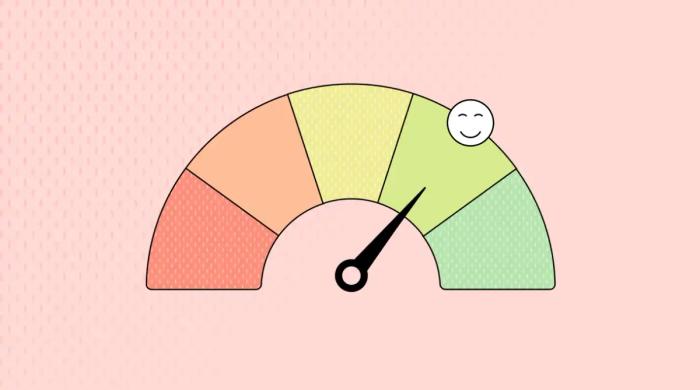
Not all email marketing customer journeys are smooth sailing. There are some pitfalls you need to be aware of.
Sending too many emails
Sending too many emails can quickly annoy your customers. This leads to higher unsubscribe rates and lower engagement. Each email should add value, not just fill up an inbox. Here’s what you can do:
- Space out your emails: Don’t send multiple emails in a single day unless absolutely necessary.
- Be relevant: Make sure each email serves a clear purpose and benefits the recipient.
- Monitor feedback: Keep an eye on how subscribers react. Adjust your email marketing strategy if you see a decrease in engagement after certain emails.
Remember, less is often more. Quality beats quantity (almost) every time. Keep your emails thoughtful and spaced well. This respects your customers' time and keeps them interested.
Lack of proper email list management
Lack of proper email list management can waste your efforts and annoy recipients. To manage your list effectively:
- Regularly clean your list: Remove inactive or unresponsive emails.
- Segment your subscribers: Group them based on interests or behavior.
- Update preferences: Allow subscribers to choose what type of emails they receive.
A well-managed list helps your communications reach truly interested individuals. You get more engagement and fewer spam complaints. Always keep your list organized and focused. This shows respect for your subscribers and increases the success of your email marketing initiatives.
No mobile optimization
Ignoring mobile optimization is a big mistake. Most emails are now read on phones. To make sure your emails work well on mobile, you can:
- Use responsive design: This makes your emails look good on any device.
- Test on various devices: Check how your emails look on different phones and tablets.
- Simplify your layout: Use clear, large fonts and easy-to-click buttons.
People on mobile devices expect smooth, easy reading and interaction. If your emails aren’t optimized for mobile, you could lose readers and potential sales. Make mobile optimization a priority to engage the growing number of users on mobile devices effectively.
Too much promotional content
Too much promotional content can turn readers off. Balance is key. To get it right, follow these steps:
- Mix it up: Combine promotional emails with informative content.
- Educate your readers: Offer tips, insights, and valuable information.
- Engage, don't just sell: Encourage interaction through surveys or customer feedback.
People appreciate learning something new. They don't want just a sales pitch. If you offer real value, they're more likely to stay subscribed and engage with your emails. Remember, a good email campaign educates first and sells second. This approach builds trust and keeps your audience interested.
No email authentication
Not using email authentication like DMARC, DKIM, and SPF can lead to delivery issues. Your emails might end up in spam folders, or worse, not delivered at all. Here’s how to fix this:
- Set up DMARC: This protocol helps email servers verify that messages are not spoofed.
- Implement DKIM: It attaches a digital signature to every email, proving it's from you.
- Use SPF: This confirms your server has permission to send emails on your behalf.
These actions guarantee your emails reach their intended destination. They also help maintain your reputation and keep your emails out of spam boxes. Begin using these tools to secure your email marketing.
Not segmenting your list
You need to send the right message to the right people. If everyone receives the same information, it’s not going to be as effective
List segmentation will help you achieve better results. When you divide your audience by demographics, psychographics, needs, and preferences, you get to send messages tailored to them.
To do this:
- Segment your list: Break down your audience by demographics, purchase history, or engagement levels.
- Tailor your messages: Customize emails to meet the specific interests and needs of each group.
- Test and refine: Use data from campaigns to refine your segments and improve targeting.
Nowadays, your audience expects a tailored message that hits every time. Without segmentation, that is not feasible.

Email marketing journey software
Email marketing software helps businesses connect with their audience effectively. It streamlines the process of sending emails, tracking responses, and managing contacts. Such software lets you:
- Send scheduled emails: Plan your emails to go out at specific times. This keeps your messages timely and relevant.
- Automate responses: Set up automatic emails for common customer interactions. This includes welcome messages and birthday wishes.
- Manage subscribers: Keep your contact list organized and up-to-date. Segment lists based on customer behavior or preferences to tailor your messages.
- Track results: See how many people open your emails and click on links. This feedback is crucial for improving future campaigns.
Why do people use it? Email marketing software saves time and increases efficiency. It provides tools to create more personalized and effective email campaigns that engage subscribers better.
Transpond exemplifies these benefits. It offers user-friendly tools for campaign scheduling, subscriber management, and performance tracking. With features like drag-and-drop email design and GDPR-compliant sign-up forms, Transpond makes it easier to craft emails that resonate with your audience and comply with regulations. Sign up for Transpond now!
Keep your email journey smooth
Crafting a successful email marketing journey is essential for building strong customer relationships. This guide aimed to demystify the process and provide actionable strategies to navigate from awareness to advocacy effectively. Here’s what to keep in mind:
- Focus on the journey: Understand and plan for each stage. Know what your customers need and when they need it.
- Balance your content: Combine educational and promotional emails. Keep your audience engaged and informed.
- Leverage tools: Use platforms like Transpond to streamline campaign management, automate tasks, and analyze results.
- Continuously improve: Track performance and adjust strategies based on insights from data.
Implementing these steps will not only enhance customer engagement but also boost loyalty and advocacy. Each email is a step towards strengthening relationships and driving business growth. Keep your strategies focused, your content relevant, and your approach adaptive. With the right tools and tactics, your email marketing journey can lead to significant returns and a loyal customer base.




